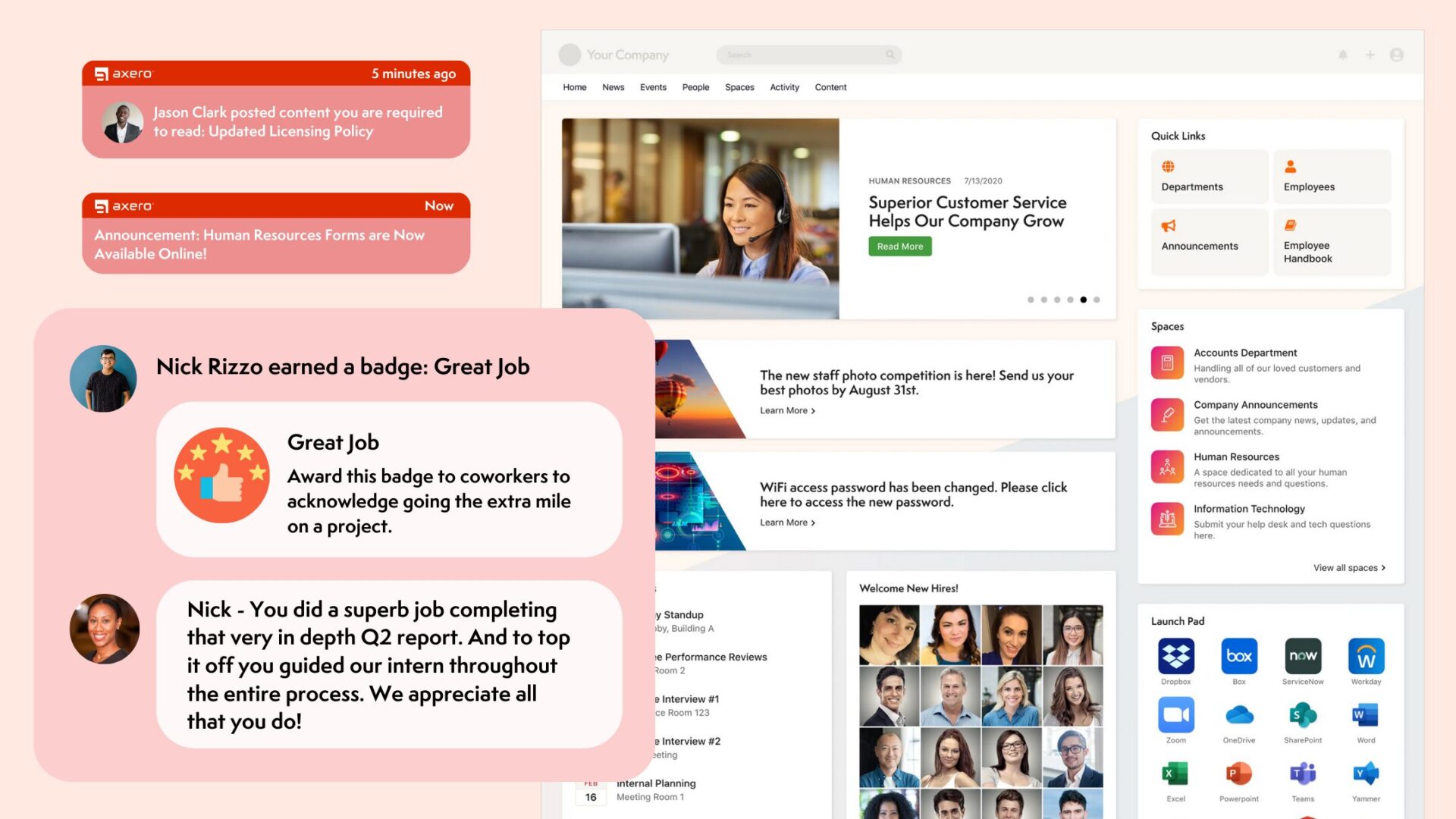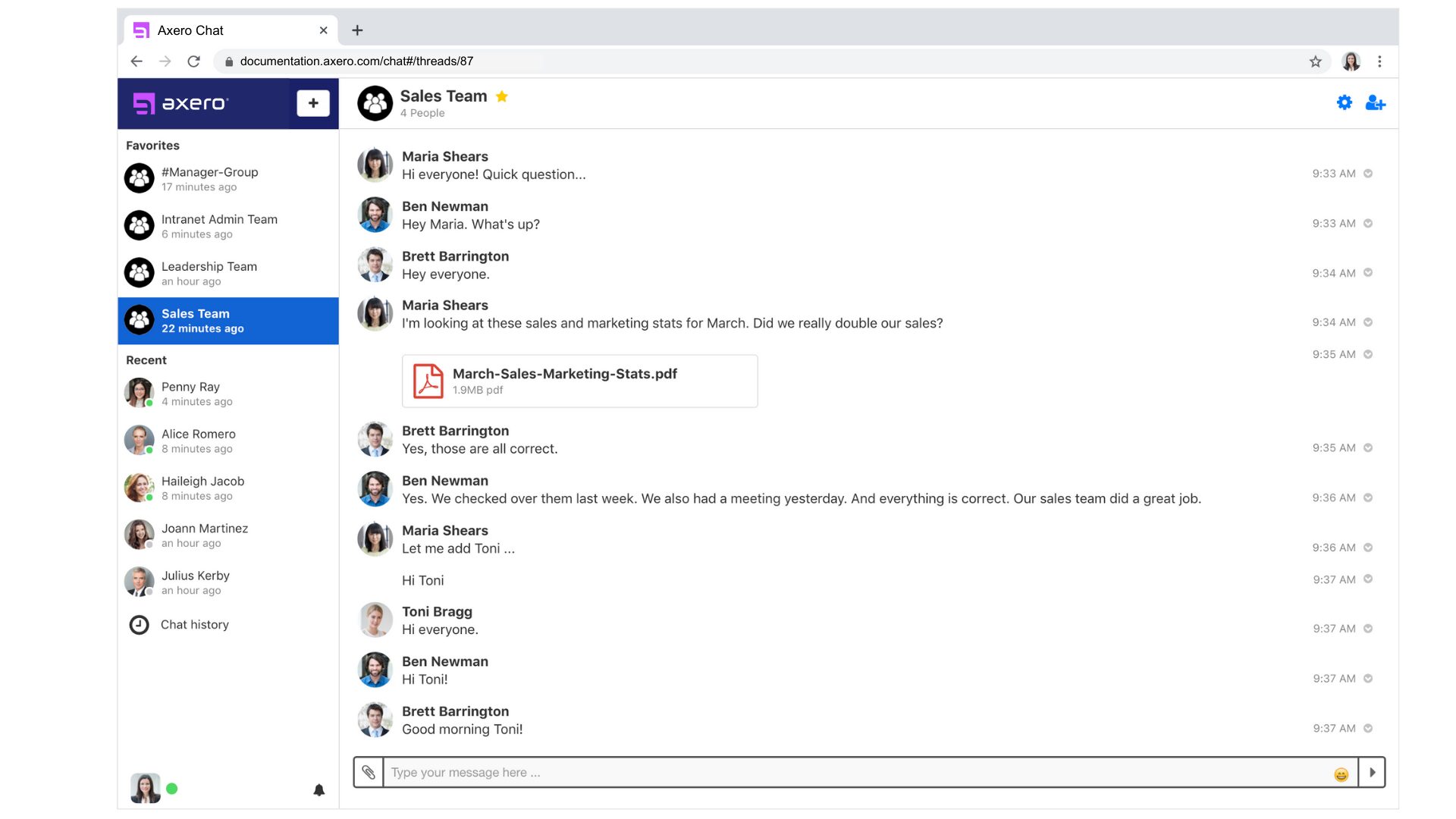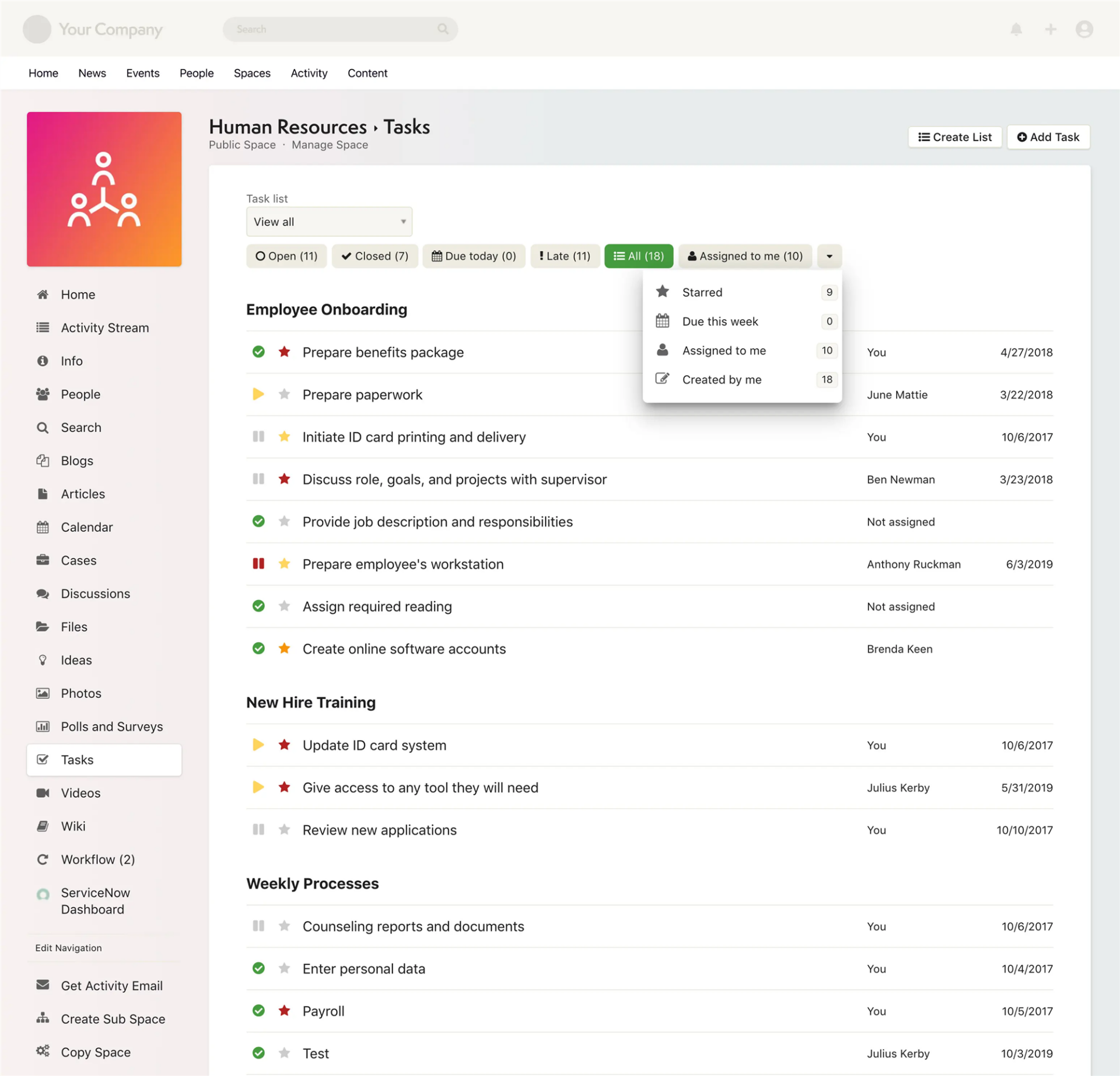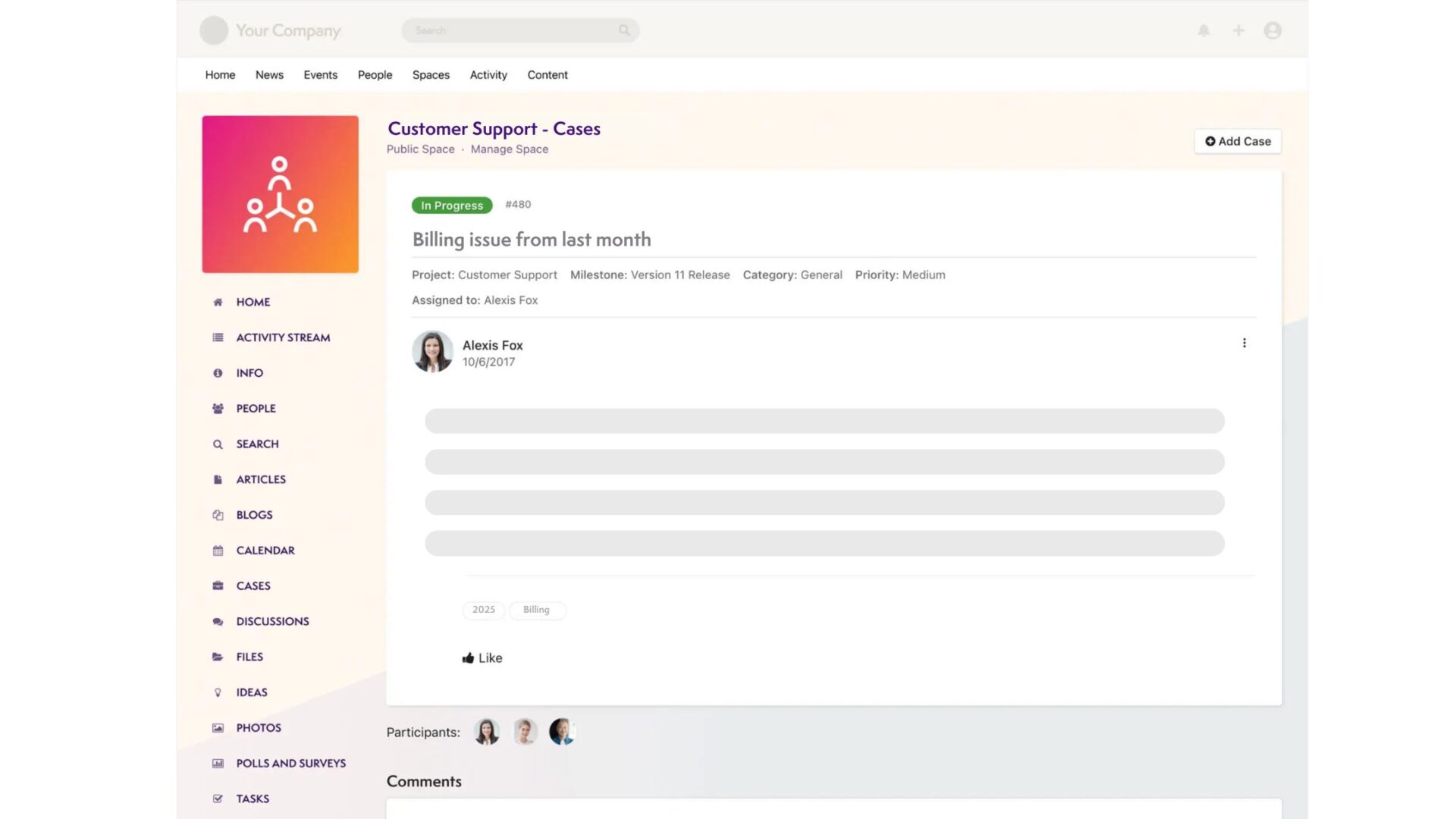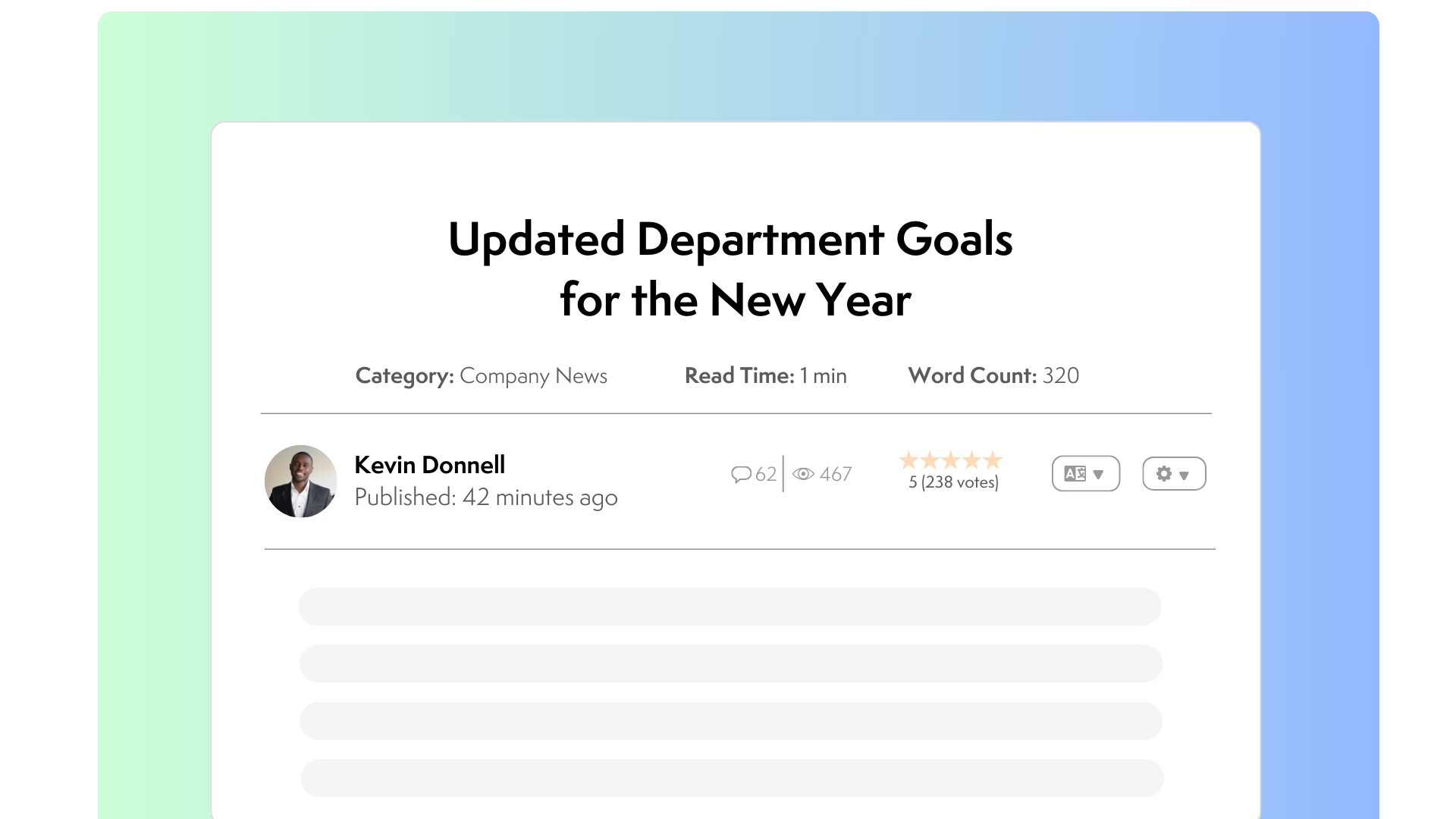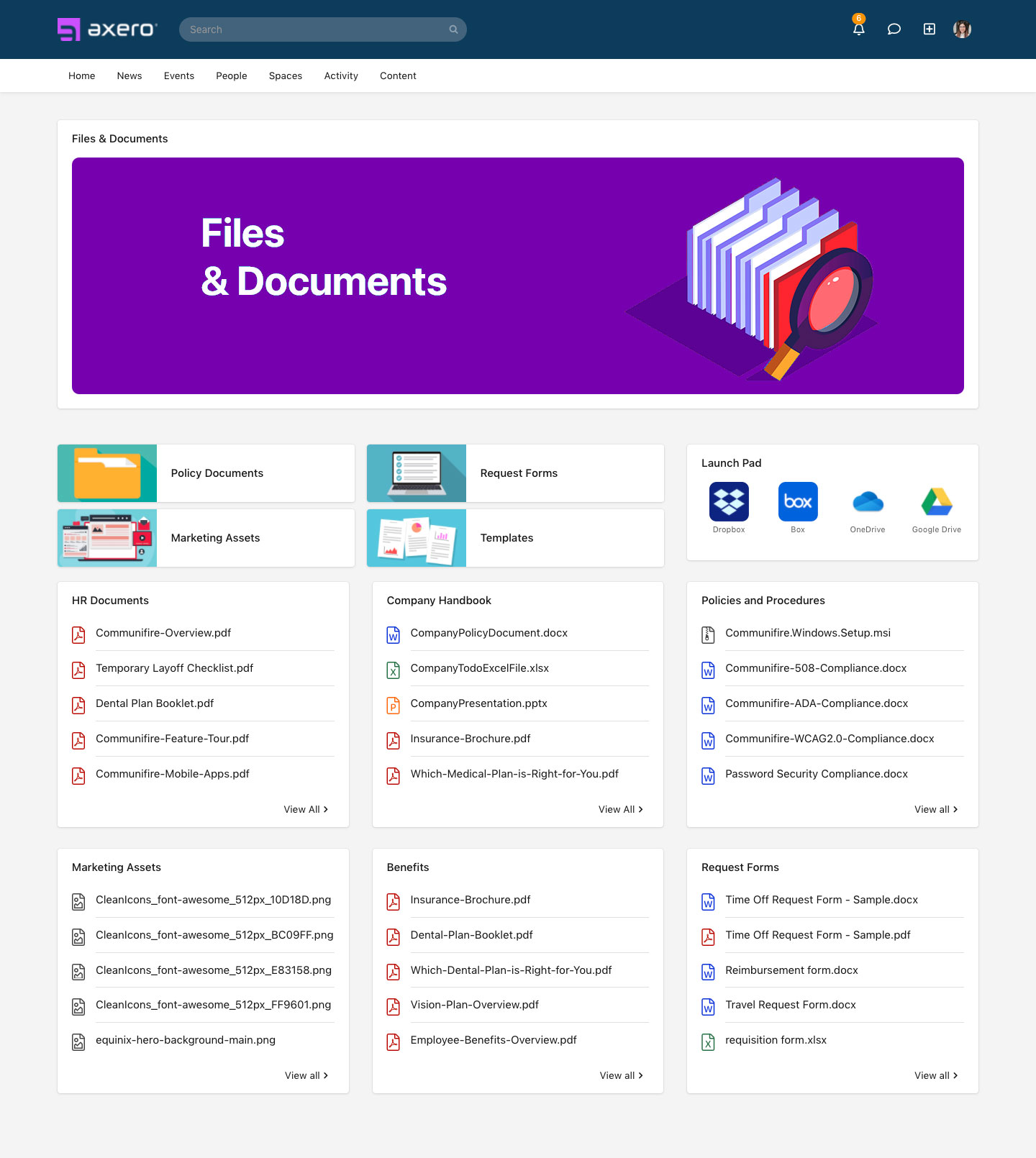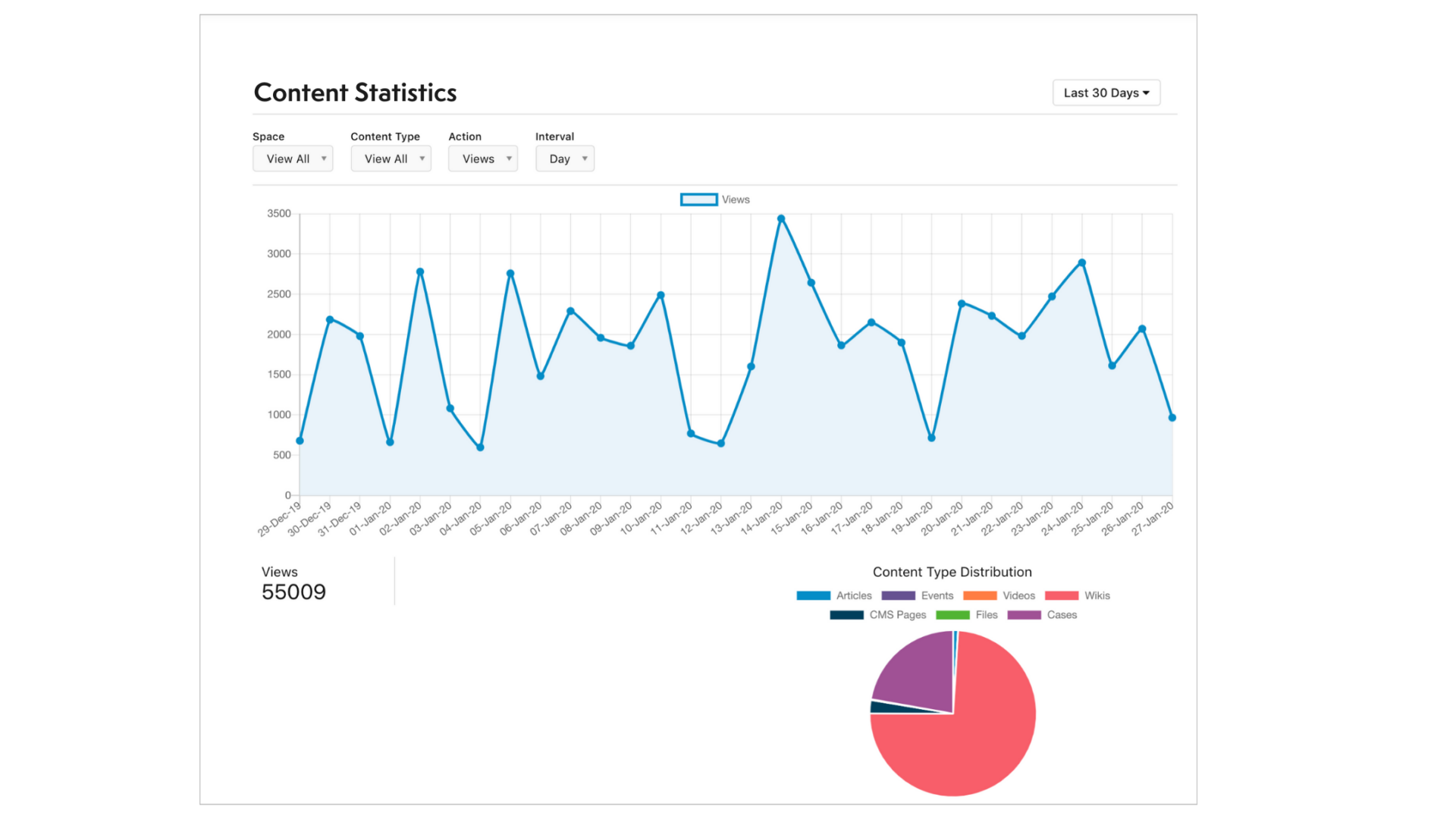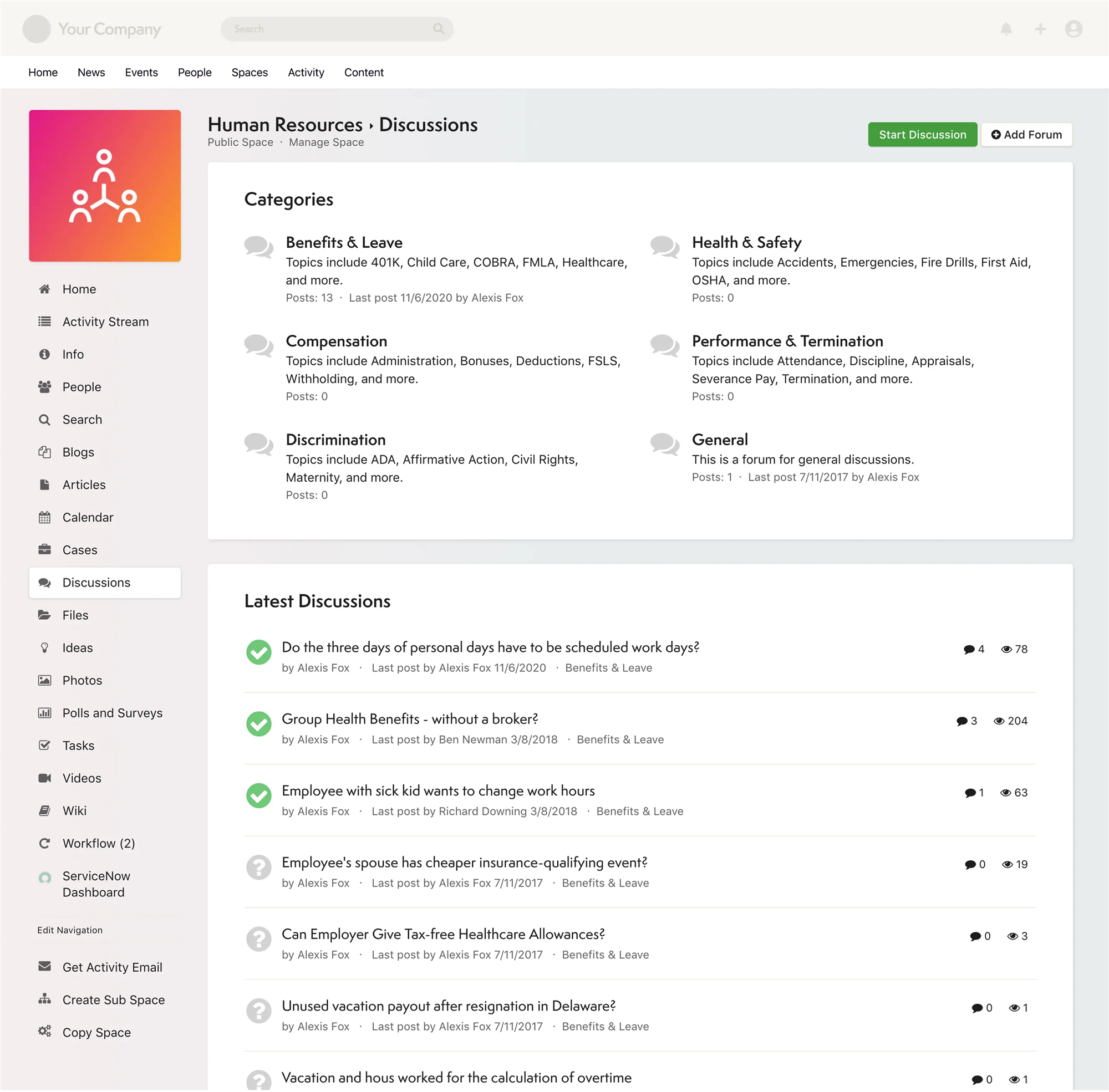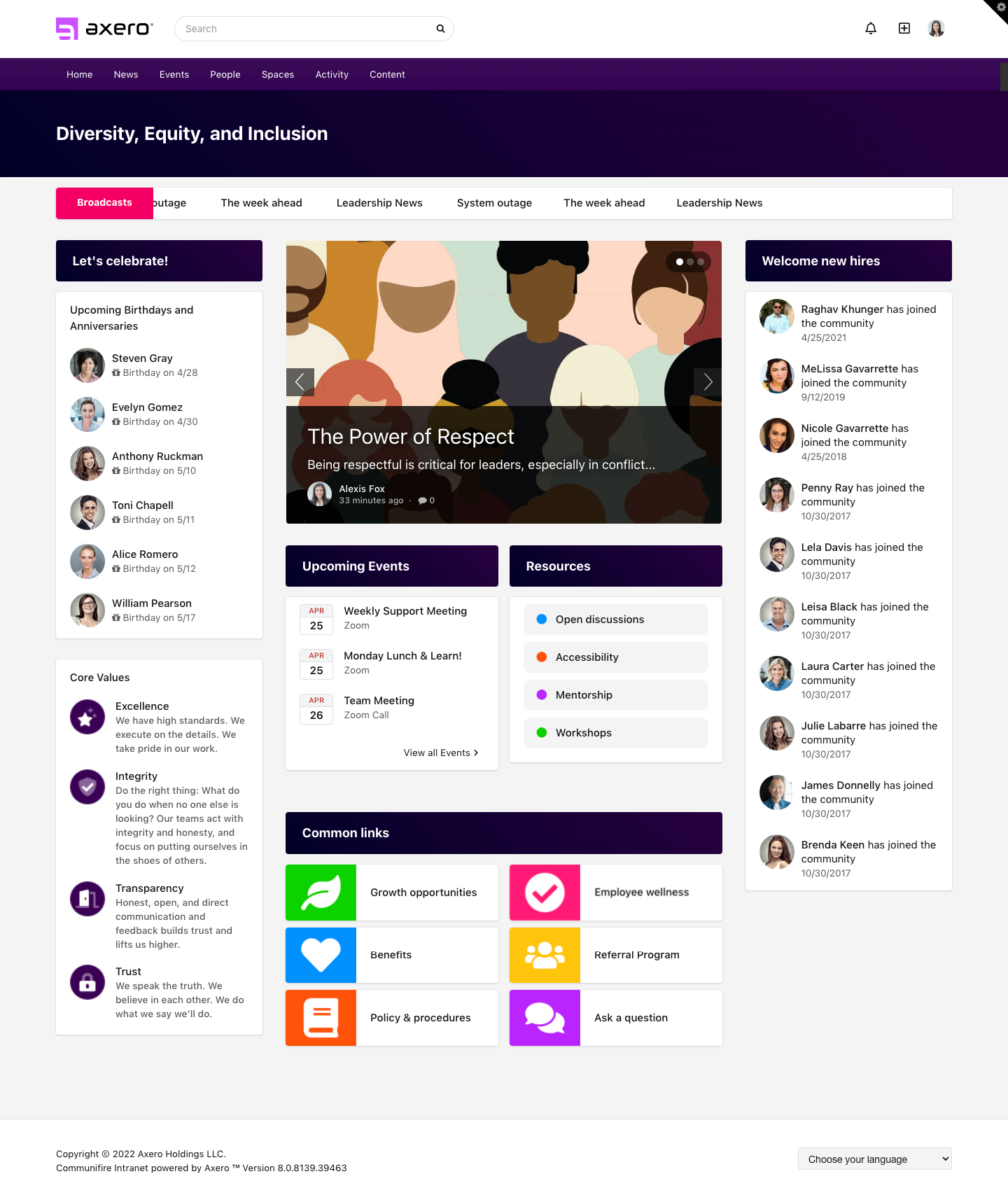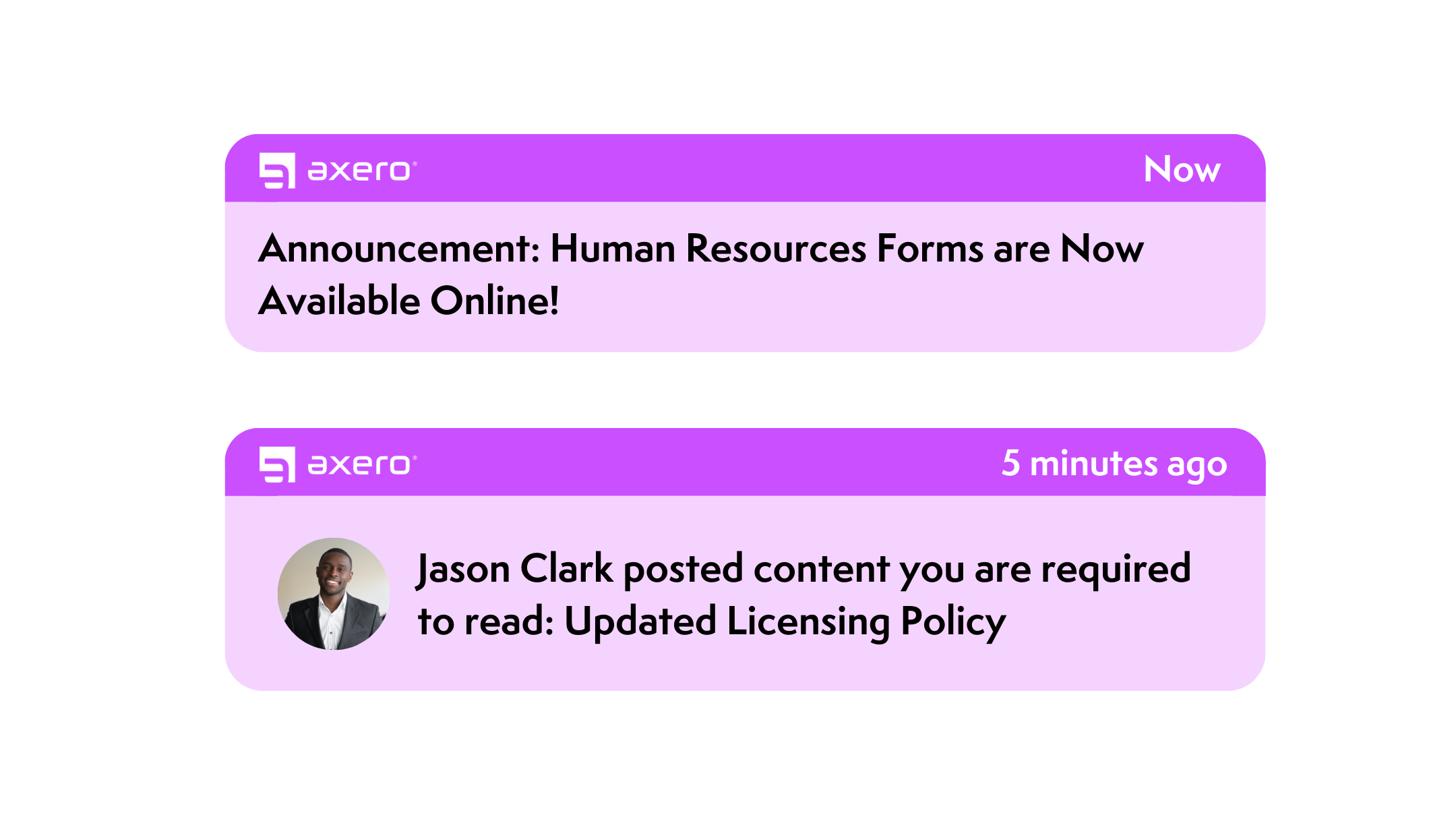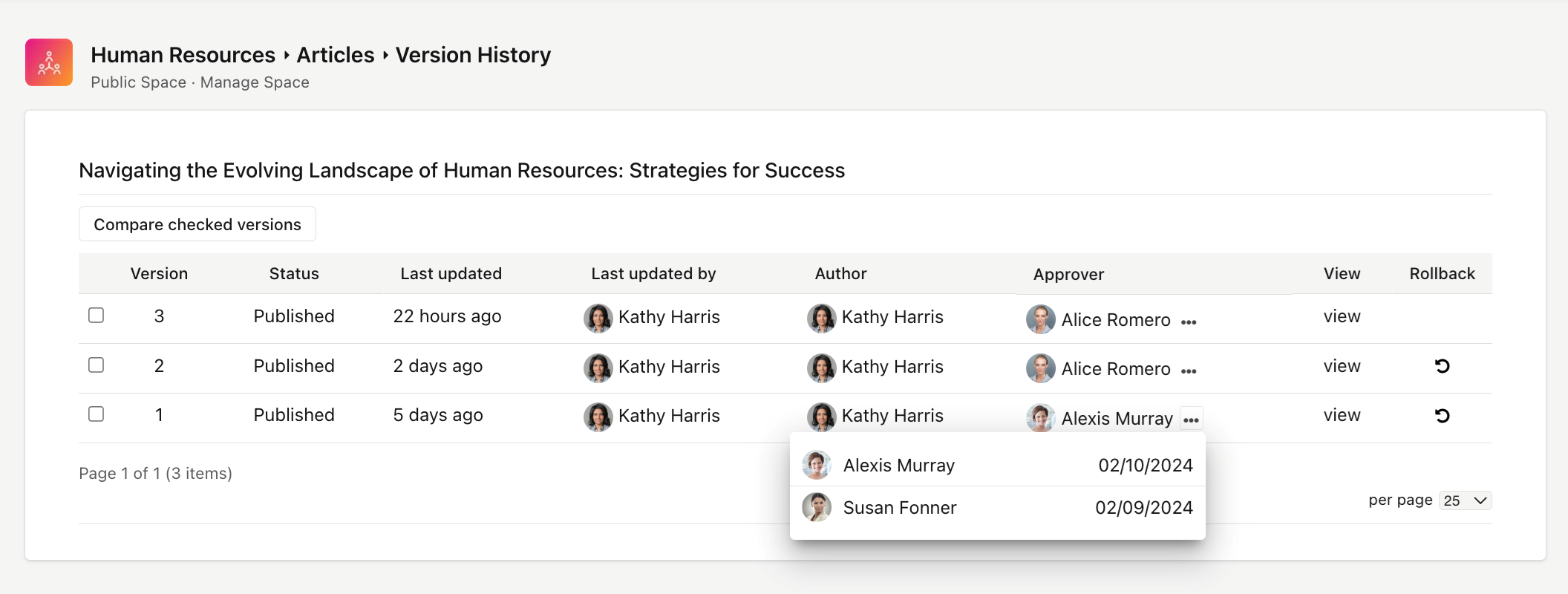There’s a couple elements that every organization needs to prioritize: internal communication, storing and sharing knowledge, and company culture. Of course, there’s much more, but these three components work together, almost like a constantly moving cycle and enables employees to be productive, aligned, and happily engaged through it all.
When it comes to business communication, today’s workplaces need technology that’s adaptable and also allows employees to communicate intuitively where and how they need to. There’s many different kinds of workplaces in today’s business landscape, so the right team communication tools meet employees in their unique and specific working environments.
Here’s where using the right internal communication software for your needs are crucial. With so many ways an organization can be structured, communication tools keep projects and collaboration flowing—whether it’s remote teams, large corporations, external and internal communication, or a single employee working from home for the day.
Why business communication tools matter
A huge area where many of today’s companies are missing the mark is with their internal communication strategy. There seems to be a disconnect between the way companies are sharing news and where employees are receiving it (if at all). According to Gallup, 74% of employees feel that they’re missing out on company information and news. This means your employees could have no idea about really important topics that impact them individually or that impact the organization they work for.
For example, maybe you sent a message in Slack to your sales team about a brand new analysis that you ran about your top competitor, but one of your sales people never saw it because it was one of 55 messages from that hour alone. What if instead you uploaded the analysis on a file sharing tool, which automatically sent him a notification, on top of a Slack message with a link?
At the end of the day, communication is usually the biggest internal issue for employers and employees. Sometimes the problem is a lack of communication in the workplace, other times, there’s too much communication and people are bombarded with information that’s not relevant or could be delivered more effectively. Working relationships need the same foundation as personal ones: everyone needs to be on the same page. When communication takes a hit, it can translate into:
- Low morale and engagement
- Unaligned and confused employees
- Decreased levels of productivity
- Overwhelmed and stressed teams
- Negative company reputation
This is why your business communication tools are so important. The right communication tools can streamline who you reach and with what, ensuring your communications are targeted, relevant, and acted on by those who receive it. You’re able to bring people together and increase efficiency and productivity. You can even simplify IT management by making team work an intuitive and organic process.
Today’s most powerful communication tools and the problems they solve
What we’re going to do with this blog post is different than many others. Instead of listing out a bunch of business communication tools and explaining what they can do for you, we’re first going to diagnose what problem or area in your internal communication that could be improved. Then, we’ll associate that diagnosis with the right communication tools for your problem.
One thing to keep in mind: communication goes beyond words, emails, and video meetings. The scheduling tools you use, the way coworkers collaborate, and how your people share files are all forms of communication.
With that said, here are 12 business communication tools that you can get started with today.
1. Feeling disconnected and jumbled? Try intranet software.
One comment that may hit close to home is, “there’s too much.” Too many tools. Too many emails. Too many documents floating around in different places. It can exhaust your employees to the point that they stop trying to keep up. When this happens teams become unaligned and messages get missed.
Maybe you need to evaluate a more modern piece of technology that could better bridge the gap between siloed teams? Maybe you have too many tools and you need to centralize everything in one place? Or maybe the tools your organization has could be effective but people weren’t properly trained?
Some of these symptoms include:
- A lot of people aren’t up to date with company news and announcements.
- Employees and departments feel disconnected.
- No one knows where anything is or messages are buried in email.
- No clear or standardized orientation policy for new employees and interns.
- Too much paperwork.
The solution?
These signs usually signify that employees need a central source for their day-to-day tools and communications. We like to call this a single source of truth and intranet software, like Axero, is the solution. With an intranet you can accomplish a lot, such as:
- Centralize internal communication: Instead of pushing messages and updates through email or a bunch of different channels, your intranet can serve as the news station for your workplace. Everything from unexpected office closings to project management, policy updates, and even onboarding materials can be found on the intranet.
- Cut back on unnecessary tools: You’re able to condense platforms (do you really need 15 different tools?) and discover what can be replaced with already built-in features. This helps you figure out what you actually need versus what’s taking up space.
- Target and segment information: Instead of consistently sending mass emails or messages, you can reach different teams or individuals with specific information relevant to their roles—and in more direct channels.
- Unite your workforce: It’s really easy for departments to become siloed. An intranet not only gives your documents and communications a home base, but it also gives the voice and culture of your company a digital hub. People-centric features, like employee engagement and employee directory capabilities, help connect and unite.
Another huge perk about a company intranet is that you can accomplish all of this while lowering IT maintenance costs because it’s self manageable. With increasing remote teams and widespread workforces, an intranet solution cultivates a more flexible workplace, which increases productivity by connecting employees to their specific goals in engaging and direct channels.
2. Too many emails? Consider chat tools.
Email overload is real. In fact, according to McKinsey, removing email from the work environment would free between 7%-8% of workers’ time for more productive tasks. As an intranet company, we’ve found that more and more organizations are trying to send less emails and switch over to more effective communication tools.
Here’s the thing, we’re not trying to say that email is obsolete. It will have it’s place for the foreseeable future. But when a company has a lot of files and updates and email is the main form of communication, it gets messy real fast. People have to dig through cluttered inboxes to find what they need for an everyday task, teams miss important messages that impact their responsibilities, and as a result, business success takes a hit.
Look out for these symptoms:
- Inability to find specific conversations because email threads are too long.
- Inboxes are clogged with unnecessary emails.
- It’s a daily hassle to complete tasks.
- Responsibilities and progress among team members are not clear.
The solution?
Private and group messaging apps are critical business communication tools because they eliminate unnecessary emails and allow users to collaborate directly—and get answers quicker. These features are important for team members solving a problem or working on a project because they’re collaborative in nature.
The ability to drag and drop files is huge. Users can also hop into impromptu calls and share materials on the spot. Many intranets also integrate with popular online platforms, like Slack or Microsoft teams, so you can also centralize all of your business communication tools in one place.
3. Project management taking a hit? There’s a tool for that.
Have you ever been working on a project and have no idea what your teammate has been doing? It happens a lot. Your overall business performance will not be as successful as it could be without efficient task management tools. Combining strong communication features with assignment tracking capabilities, a task management tool will transform the way staff completes the most vital aspect of your company: their jobs.
Without a strong project management system in place, projects could be a confusing, timely process for team members who are unsure about what they should be doing. These issues further escalate when management doesn’t have a direct way to monitor progress.
Watch out for these symptoms:
- Management doesn’t know the status of ongoing projects.
- Staff is confused while executing tasks.
- Teams don’t know the importance of tasks, when they’re due, and how to prioritize ongoing projects.
- Management does not have an organized system to monitor all projects.
- Expectations and a person to report to are not clear to team members.
The solution?
A task management is an essential communication and collaboration tool because it solves all of these problems. From execution to completion, task management software helps employees and directors reach their goals as efficiently and successfully as possible. Managers can directly assign tasks to team members and track their progress. They can also set due dates and priority settings, which appears in an organized list for everyone involved.
Task management, with built-in communication tools, helps employees know who is delegating an assignment, when it is due, and the level of importance so they can plan projects accordingly.
4. Customer relationship management problems?
Today’s customer wants the ability to connect with you across a variety of channels. The problem is that the people who need efficient support, like your customer service reps and frontline workers, don’t always have the right business communication tools to assist customers promptly. Customer queries are generally lost, call volumes go up, and the inability to assign the right employees to handle customer queries leaves many customers frustrated.
The symptoms:
- Customer retention is declining.
- Customers are waiting a long time to get help and the overall customer feedback is negative.
- Employees are missing customer queries.
- Management cannot track the progress of cases.
- There isn’t an organized system to place solved and ongoing cases.
The solution?
Issue tracking software is one of the best internal communication tools to manage customer queries. Customers or employees can submit a case or ticket, get it assigned to the right employee, and have it resolved on time.
Cases, issue tracking, and ticketing tools helps centralize customer support queries, track open issues, monitor team productivity, prioritize the most important questions, and collect valuable customer feedback that helps improve your products and services.
5. Low engagement with communication? Internal blogs to the rescue.
If you’re part of the corporate comms team, you know that one of the biggest hurdles is getting people to read messages that you send out. When it becomes a growing issue, there’s a strong sense of unengaged teams and low morale across the company because people have become disconnected. They have stopped interacting with the voice of their employer.
You know the saying “people eat with their eyes”? When your content looks good, people will want to read it. Leaning on some kind of internal portal, but particularly a CMS intranet, to have a company blog thread can be a powerful communication tool. To be successful, great content will be the defining indicator as to whether your internal teams will be engaged or not. If you have low engagement from employees, little or no feedback, and an increasing ratio of lurkers to active participants, the type of content you post is likely the problem.
The symptoms include:
- No ones reading company newsletters.
- People feel indifferent about their company culture.
- Employees don’t know about the exciting things happening within the organization.
- Morale is low.
The solution?
The brain processes visual information 60,000 times faster than text. Therefore, it’s a no brainer that sprinkling images and videos throughout your company communication will get more traction from your employees.
Using your virtual workspace to post training videos, messages from top-level managers, and culture videos will increase engagement and retention. When it comes to image-focused content, infographics are another great way to display important information. Particularly for data, timelines, or explaining complicated topics, infographics will simplify information in a catchy and engaging way.
Knowledge sharing comes in many forms—create and post training videos, messages from top-level managers, and behind-the-scenes footage about your new product launch, to inform your employees about company news and increase engagement. Create a company blog and give your culture a voice that people want to check in with.
6. Too many documents and files? Consider knowledge center tools.
These days, companies have a lot of data, documents, and files. It can become truly chaotic for your managers to stay organized and for your staff to confidently find the most up-to-date document. When this happens, people become confused and it takes away from the day.
Let us give you real-life example of an Axero customer: Mariner Finance is a personal loan company with branches in numerous states in the US. Because they operate in many states and counties, there’s different loan policies for different branches and within that, these policies consistently get updated and changed. Email used to be the main channel to notify loan officers of policy updates but it became really complicated for their teams to keep up. Centralizing their documents into a knowledge management system that links out to their third party applications proved to be a game changer.
The symptoms:
- Employees can’t find the most current document they need.
- Too many emails.
- Files live in too many platforms and people have troubles finding them.
The solution?
Knowledge management tools. Instead of sending emails about updates to documents, you can instead centralize and distribute everything in a knowledge base. Teams get instantly notified about new content and can make reading required, all while cutting down on emails.
7. Can’t track employe engagement?
Have no idea how your employee engagement is doing? Determining where you need improvements is difficult when you have a bunch of different numbers floating around. Or, when you’re not sure what information you need to track. Especially when you introduce new or more communication tools, your internal communications department needs to understand what’s working and what is not.
The symptoms:
- Management does not know how engaged employees are with the company.
- It’s unclear if staff are generally confused about specific aspects within the business.
- Management has a difficult time sorting and tracking internal data.
The solution?
An analytics and sentiment feature is one of the most effective business communication tools to evaluate user behavior. You’ll never have to wonder how many members are reading an article, commenting on a forum post, or what their overall feedback is about what they’re viewing.
This data automatically stores into a comprehensive report. Determine what content is working and what isn’t. You can also dive deeper into Q&A posts to understand how many people have the same questions. Gathering this information helps you to make necessary tweaks to the overall employee experience and how communication flows through your organization.
You certainly have a lot of options! You can explore dedicated employee engagement tools, tap into features that exist within an intranet, or try some of these employee engagement best practices. Regardless of the route you take, having an accurate read on how your employees are engaging with the information they receive is key.
8. Repetitive questions? Store them with discussion forums.
Do you find that people in your organization ask the same question? Questions are, of course, essential to making smarter decisions, learning, and collaborating. But it’s also efficient to eliminate unnecessary ones. Especially when it comes to onboarding new hires, centralizing internal knowledge is a game changer. Senior workers can orient new employees on what’s what within an organization, helping them get up to speed quickly and with fewer mistakes along the way. At the same time, a digital workspace where employees can ask questions and discuss projects streamlines the way an entire company operates.
Here are some symptoms to look out for:
- Employee questions go unanswered.
- Management is divided on who to go to for queries.
- Knowledge sharing is lacking.
- People keep asking the same questions.
The solution?
A discussion forum that encourages management and employees to openly discuss any topic. Discussion forums serve as a living library of your organizational knowledge. They’re like FAQ pages that people can refer to and continue building conversations around.
Discussion forums and similar knowledge center tools disseminate internal knowledge and helps employees figure out answers quicker. They are also great for archiving organizational knowledge—sometimes conversations drives the most valuable ideas. Now, all those thoughts are stored and accessible for your entire organization.
9. Lacking a home base for each department?
When departments don’t have their own space to share and store pertinent information, business communications get messy. Department heads do not have an organized way to share information with employees in their division, and employees within that division do not have a designated place to find the information. This also isolates departments from each other, leading to an all-around disconnected company.
The symptoms:
- People are unaware about news within their area of the business.
- Staff throughout the company know nothing about updates and projects in other teams.
- Members don’t know where to find information related to a specific group within the company.
- Management has a hard time sharing department-wide news directly with staff.
The solution?
If you want to improve communication in the workplace, spaces, or workspaces, are your answer. Spaces are the best communication tool to divvy important content, files, and people into one livable place. You can create a space for anything – an HR department or an office based in Austin, TX. It’s also an easy way for people to find department-specific documents. (For instance at Axero, everyone in our company knows to go to the Marketing space for brand guidelines and product images!)
You’re also able to set permissions to designated individuals who can disseminate information and monitor the space. Members within a space can share photos, create forums, and receive notifications about every update without overwhelming their inboxes.
10. Want a more direct way to reach people?
Creating and sharing valuable content is useless if members do not know about it. Many times, businesses already have the materials and dedicated staff, but lack a strong software to deliver and connect.
In these instances, companies tend to rely on emails, but there are many situations where a social form of communicating is more appropriate and effective than an email.
Imagine this: you want to notify staff about an updated HR policy. You send an email and receive some responses. But what about the employees you haven’t heard from? Did they read the email and the HR update? Did they ignore the email entirely? And now, the dozen emails you did receive is taking up unnecessary space in your inbox.
Watch out for these symptoms:
- Staff is not reading important notices because they are lost in emails.
- Staff have a difficult time locating information from a specific department.
- Department heads are unsure if messages were received.
The solution?
A digital workplace with an alerts and notification tool will make the world of a difference for your internal communications strategy. Notify staff about company-wide announcements, or send department-targeted updates in a noninvasive, direct way. Members will instantly receive notifications about any space they are members of.
Business communication tools centralize conversations between colleagues in one place. Staff will never have to worry about missing an email from a customer or external contact. A quick, automatic notification alerts members about important information you want them to see.
11. Feeling like no one knows who’s who?
Does it feel like people don’t know who to turn to for a specific question (especially when it involves people outside of their team)? To make your business communication as connected as possible, you want your staff to who who’s who. Whether a company is large or small, if a member does not know the people and roles within your organization, communicating about a specific topic, or asking questions is difficult.
The symptoms include:
- Team members don’t know the appropriate person to contact for questions or information.
- Employees are spending a lot of time tracking individuals or information through other colleagues.
- Staff don’t know members within departments and who they report to.
The solution?
Employee profiles are a powerful business communication tool because they provide context about each person within your organization. People can learn about specific individuals’ expertise, understand their role, interests, and who they report to. This alleviates confusion when a staff member needs to contact a specific individual.
Furthermore, profiles put a name to a face. You not only accelerate problem resolution by providing employees with an effective tool to find the right person, but you also build a stronger sense of community. Team members feel more like teams.
12. Trying to expedite the small stuff?
It doesn’t matter if you manage a team of two or 25, everyone can agree: we’re all busy. Too often teams are waiting on feedback from busy managers who barely have time for lunch. This can delay projects from completing on time or put teams in uncomfortable positions, wondering how long and often they should remind managers about projects awaiting approval.
The symptoms include:
- Content-related projects take way longer than expected.
- Managers lose track of projects and their due dates.
- Employees are unsure when to consider projects finished.
The solution?
A workflow tool enhances collaboration by streamlining the process of handing off and approving projects. When employees complete a project, the supervisor is notified immediately (an added bonus: alerts are sent in a direct, noninvasive way without email).
The project can get passed to as many supervisors as you wish and every member is looped in throughout the entire process. Workflows are seamless and easy – they empower your members to create content shareable for your company.
To wrap it all up
Communication is the key to success. So how your employees, leaders, and customers communicate and interact with your organization matters. One of the biggest benefits of an intranet is that you get all of these 12 business communication tools and more bundled into one platform. Prioritize how communication happens in your workplace. By doing so you will be better positioned to improve efficiency, engagement, and knowledge sharing.
